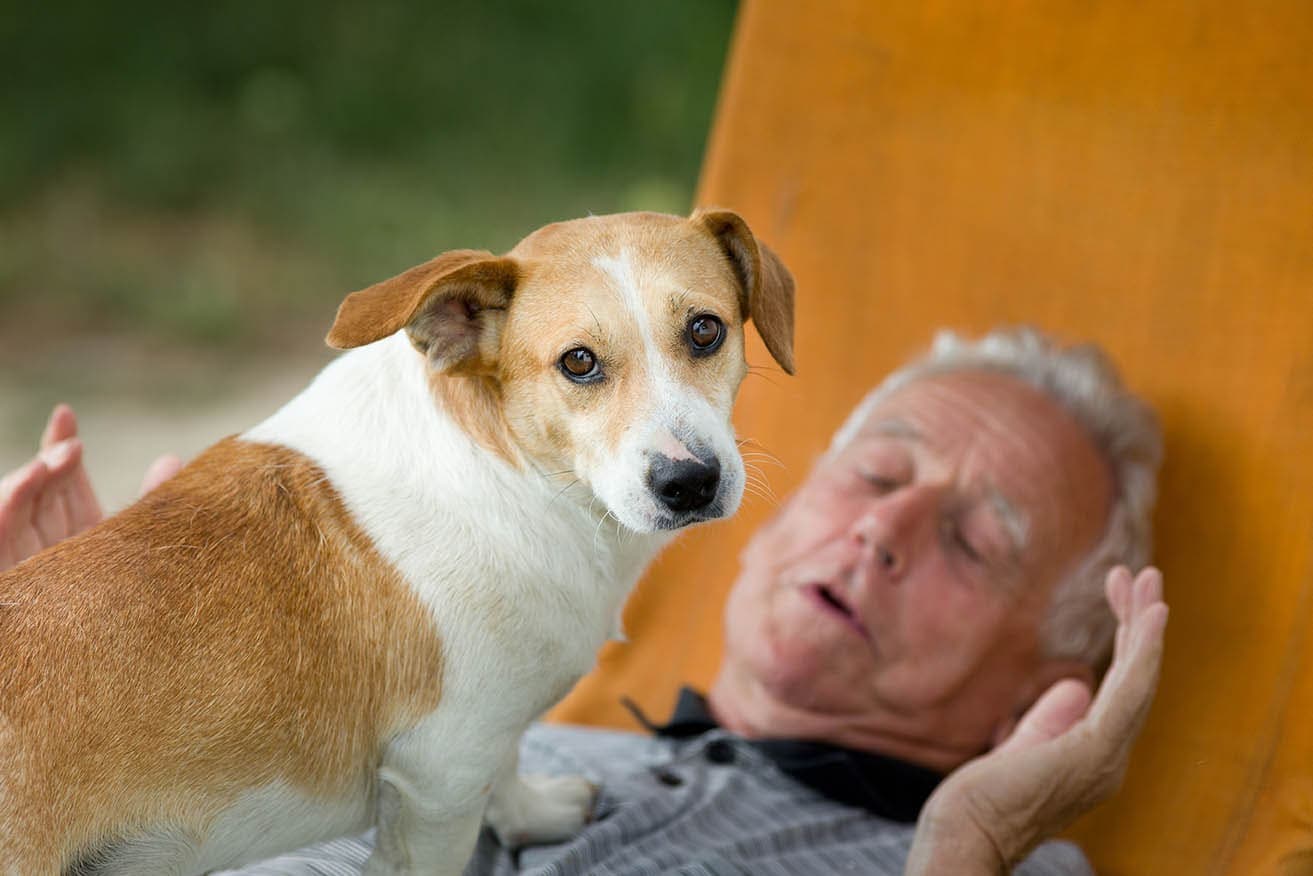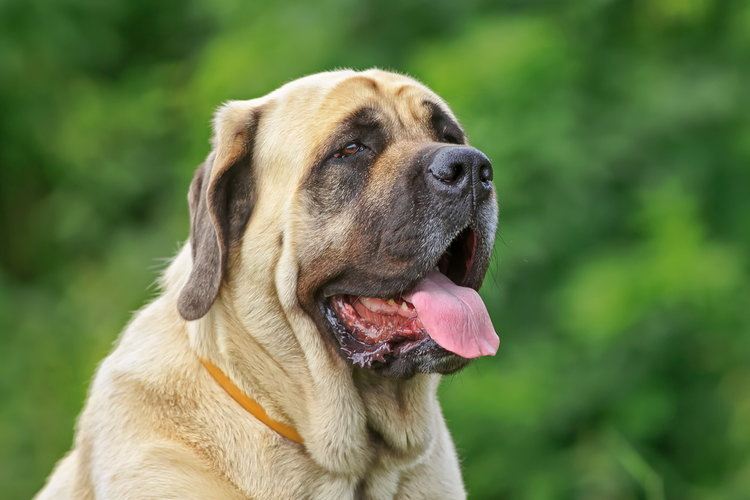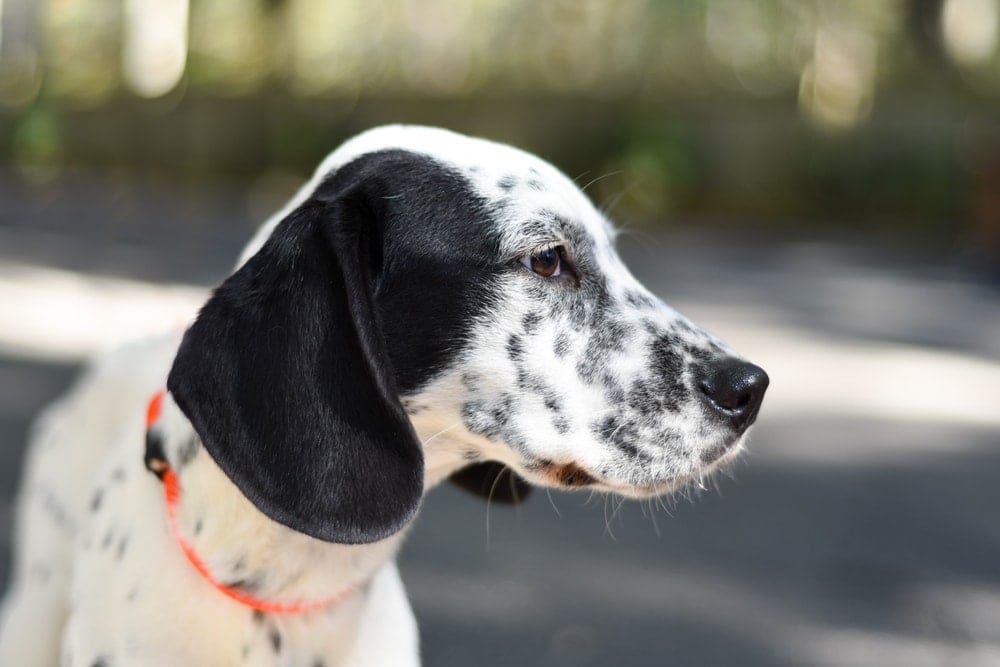Cane Corso vs. Pit Bull: What are the Differences?

Updated on
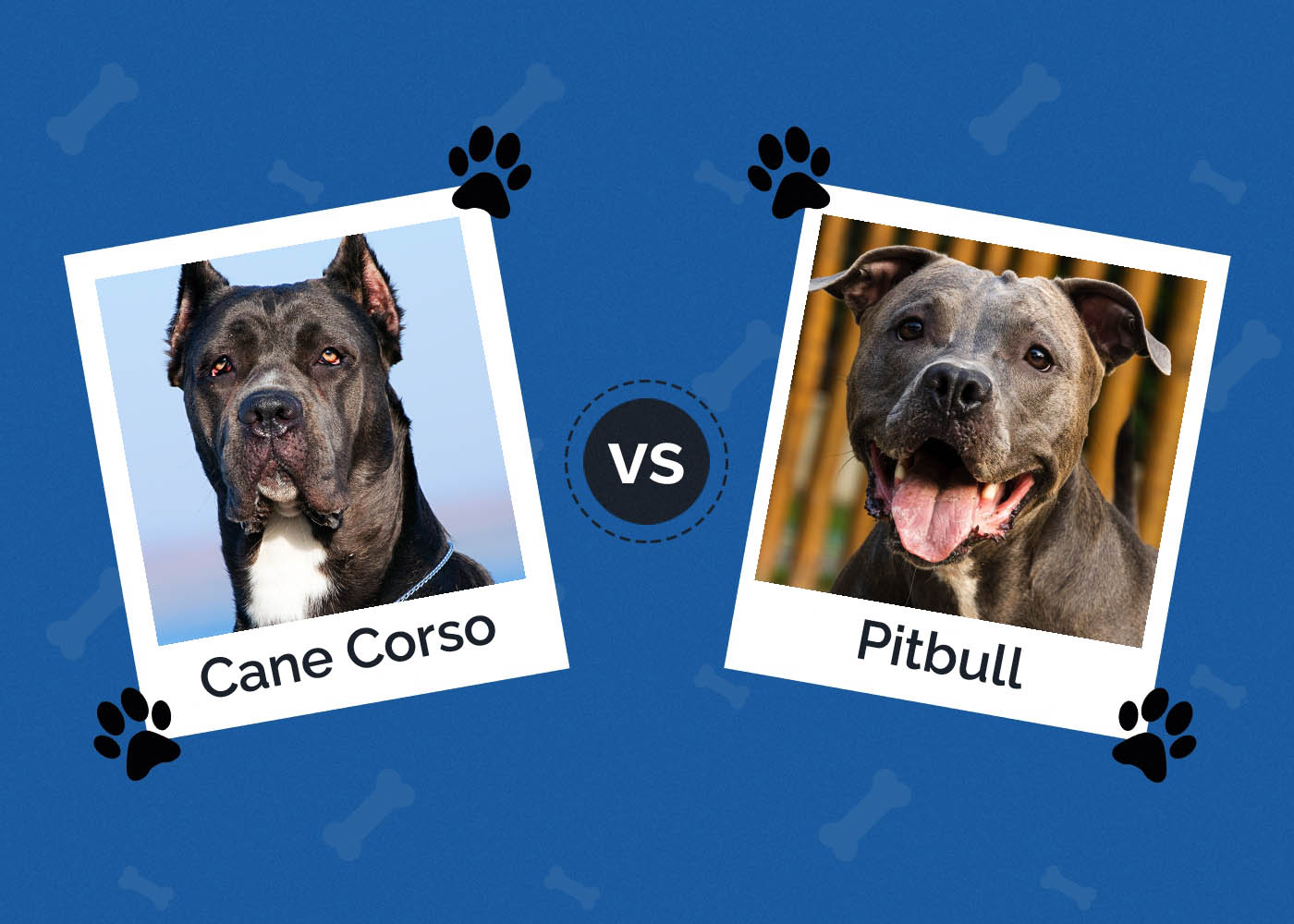
Cane Corsi (plural for Corso) and Pit Bulls are very different breeds with certain distinct comparable qualities. At first glance, the novice may confuse these two types of dogs for each other as there is a similarity in appearance, but there are also obvious differences in temperament and looks.
So, let’s have a peek at the similarities and differences between these two gorgeous dogs. This could make your decision somewhat easier when you are looking for a Cane Corso vs Pit Bull for your family.
Visual Differences
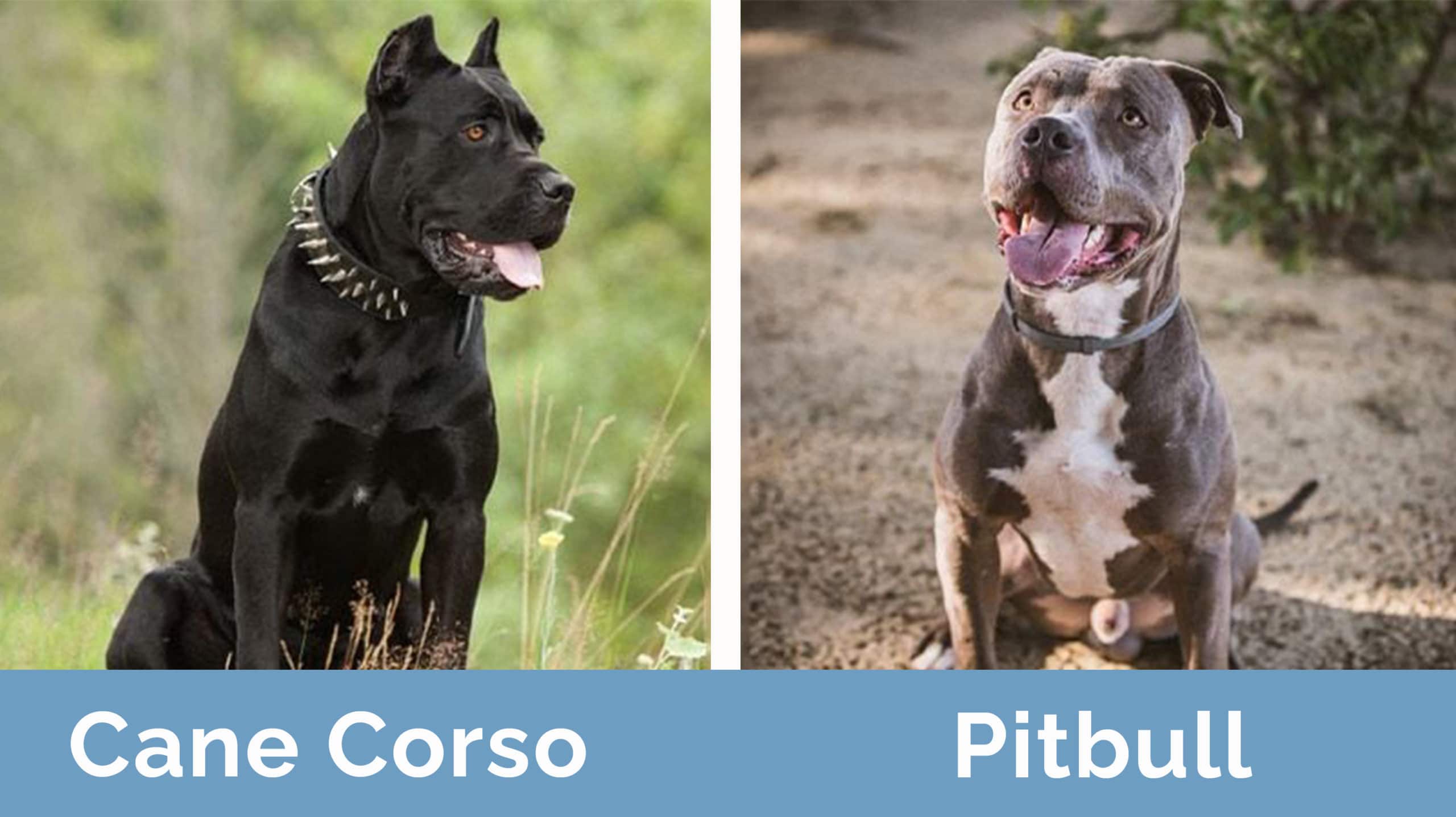
A Quick Overview – Cane Corso vs. Pit Bull
- Average height (adult): 25–27.5 inches
- Average weight (adult): 85–110 pounds
- Lifespan: 9–12 years
- Exercise: 1 hr/day
- Grooming needs: Low
- Family-friendly: Yes, but not with small children
- Dog-friendly: Sometimes
- Trainability: High, highly intelligent and agreeable with some independence
- Average height (adult): 17–21 inches
- Average weight (adult): 30–90 pounds
- Lifespan: 12–15 years
- Exercise: 45 min/day
- Grooming needs: Low
- Family-friendly: Yes
- Dog-friendly: Sometimes
- Trainability: High, highly intelligent and agreeable with some independence
Cane Corso Overview
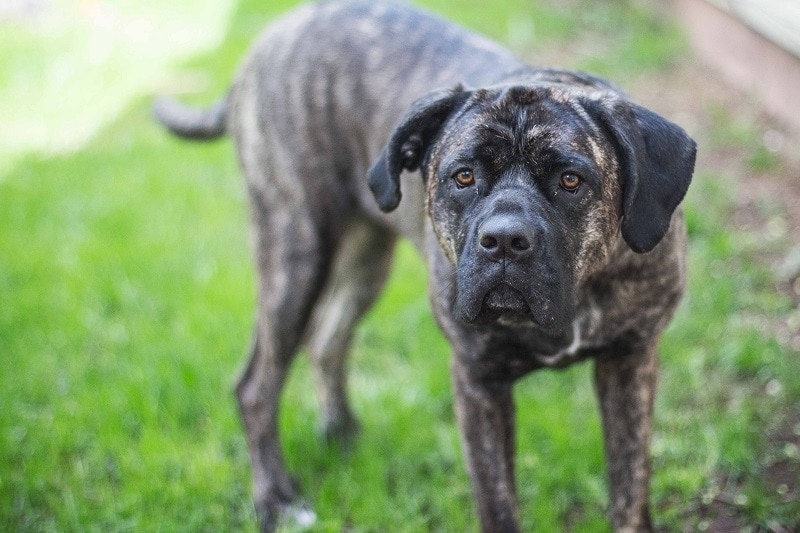
The Cane Corso (pronounced KAH-neh-KOR-soh) was originally found in ancient Greece and brought back to Italy by the Roman Empire after they invaded the Greek Islands. They are a Mastiff-type breed used as war dogs for the Roman Empire and eventually became guardians and hunting dogs.
The Corso is a large and muscular dog with a short, double-layered coat known to shed and will require weekly brushing. They range in colors of black, fawn, gray, red, and chestnut, sometimes with brindle, and usually sport a gray or black mask.
Corso puppies shouldn’t be too difficult to find and will run around $2,000 to $3,500 if you find one through a good breeder. Of course, you could also look for a Corso puppy or adult through a rescue group, which might range in price from $200 to $600, and you’ll be saving a dog and giving her a good home.
Personality
The Cane Corso is a purebred dog that is a part of the American Kennel Club’s (AKC) Working Group and is ranked as the 32nd most popular out of 196 dogs. The Corso is a powerful dog that needs an experienced owner who can be firm and assertive yet gentle and kind. They are intelligent, devoted, affectionate, and fearless dogs that will protect their loved ones and will attempt to dominate unless properly trained and socialized at a young age.
They make wonderful family pets and are great with children, but they will do best with older children because of their large size. However, there should always be supervision when children are around dogs regardless of the children’s ages and the dog’s temperament.
The Corso will fearlessly protect her family and property and is known to be quite loyal and loving towards her family. They need an owner who can spend a lot of time with them, as a bored and neglected Corso will become destructive and possibly aggressive. If they have been socialized well, the Corsi should get along okay with other dogs, but they are known to be standoffish with strangers. They usually treat any animal or person outside of their family with reservation and sometimes suspicion.
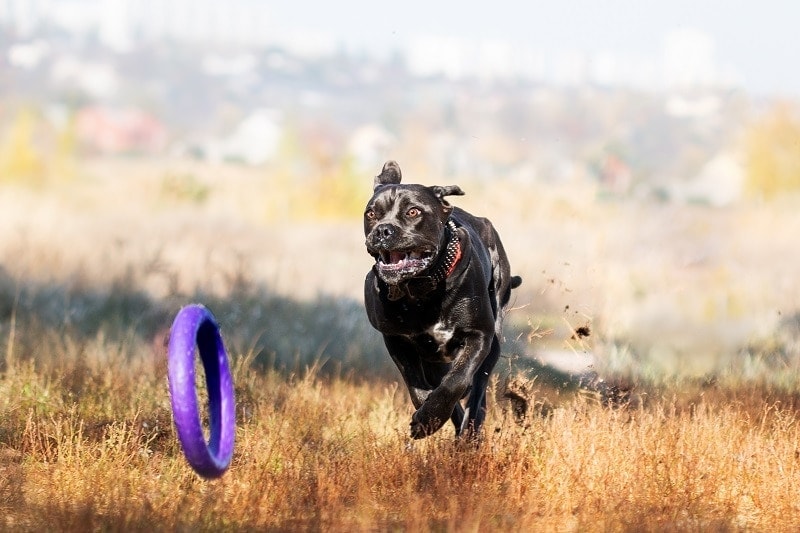
Training
The high intelligence and eager-to-please attitude of the Corso make her easy to train, but she’s also quite headstrong with an independent streak, which adds challenges to the training process. Because they are strong-willed and such large dogs, early training and socialization are imperative when they are puppies. Puppy training classes, as well as obedience training, are actually a necessary part of owning a Corso puppy. As an owner of a Corso, it’s also essential to train her consistently and with firmness but with love and positive reinforcement.
The Corso has a high prey drive, and early socialization is critical at a young age. It’s best to not have any small animals in the home with the Corso because of their protective and hunting instincts. You should introduce your Corso to as many new places, and people as possible as this will allow her to become a well-mannered and well-adjusted adult dog.
Health and Care
Feeding your Cane Corso begins with finding the right kind of dog food that has been made for your dog’s current age, activity level, and size. The instructions on the back of the dog food bag usually give accurate instructions on how much and how often your Corso should be fed over the course of the day.
Exercise is vital for this breed as they are energetic dogs that are usually at their best when given a job to do. The Corso will need a minimum of 1 hour of exercise every day, so expect to take her for long walks or runs at least 2 times a day.
Grooming is easy with this breed as while she has a double coat, her fur is quite short, and she’ll only need to be brushed about once a week. However, during the spring and fall shedding seasons, you might want to brush her every day to help reduce the large amount of fur flying about. She will only need a bath about once a month, and like all dogs, you’ll need to stay on top of brushing her teeth, trimming her nails, and cleaning her ears.
The Corso is a robust and healthy dog, however, she is prone to hip dysplasia, degenerative joint disease, abnormal eyelid, cherry eye, and lower eyelid droop. The veterinarian will check your Corso’s hips and joints as well as her eyes for the possibility of her inheriting any of these conditions.
Suitable For:
The Cane Corso will fit in well with a very active family with older children, and a house with a yard will suit her best. The owner must be an experienced dog owner in order to better handle the strong-willed nature of this large and strong dog. Anyone looking for a loving family pet that will also be an excellent guard dog can’t do much better than the Corso.
Pit Bull Overview

American Pit Bull Terriers are not members of the AKC, but you can find her in the United Kennel Club (UKC) as a member of the Terrier Group. There is a great deal of controversy and misunderstandings that have long surrounded this breed, but they are also known as one of the best family dogs out there. The Pit Bull originated in the UK in the 1800s through crossbreeding between various Terrier and Bulldog breeds and was initially used in (now illegal) blood sports.
The Pit Bull is generally a muscular, medium-sized dog with a smooth and short coat that comes in almost all varieties of colors and patterns, with the exception of merle. The ears are sometimes cropped or left natural, and they have a long, whip-like tail.
Pit Bull puppies can range from $200 to $600 for adoption fees from a rescue to $2000 to $3000 from a reputable breeder. There are many breeders of these puppies available, so make sure you do your homework to ensure you find your puppy through a responsible breeder.
Personality
The term “Pit Bull” actually covers a number of breeds, including the Bull Terrier, the Staffordshire and American Staffordshire Terrier, and the American Pit Bull Terrier. The American Pit Bull Terrier is regarded as the only true Pit Bull.
The Pit Bull is a confident, enthusiastic, and affectionate dog that loves everyone she meets. They are known to be excellent family pets that adore children and make fantastic therapy, service, and police dogs. The Pit Bull makes a terrible guard dog because of her inherent loving nature and friendliness to anyone that visits.
American Pit Bull Terriers were bred to fight other dogs, and if they are not properly socialized as puppies, there could be aggression displayed to dogs they are unfamiliar with. They also tend to have a very high prey drive, and there could be issues with cats or other small animals as well if there hasn’t been proper training.

Training
The Pit Bull is a very clever dog that wants to please her owners, but she also has a stubborn and headstrong streak. Training needs to be accomplished with patience and a firm hand but tempered with love and positive rewards. You need to start training your Pit Bull puppy as soon as possible and ensure your dog is focused on you as she can be easily distracted.
The American Pit Bull Terrier needs to be socialized as well as early as possible because of her protective instincts and high prey drive. Teaching the Pit Bull that not every animal or person is a threat is essential, and the more people and places she is exposed to, the happier and calmer she will be.
Health and Care
Your Pit Bull will require a high-quality dry dog food that is designed for her current situation. You’ll generally need kibble for a medium-sized, energetic dog, and be sure to follow the guidelines regarding the amount she needs to be fed during the day.
The American Pit Bull Terrier does exceptionally well in a variety of dog sports such as agility and obstacle courses. They are also known as wall climbers, so ensure your fencing is tall enough to contain her, and it’s probably a good idea to not leave her alone in the backyard. You should also be prepared to take her for brisk walks for a minimum of 45 minutes every day. If she doesn’t get enough exercise or time with her family, she will resort to aggressive and destructive behavior.
Grooming the Pitbull is easy as she’ll only need a weekly brushing, but daily brushings should help keep up with her shedding during the spring and fall. They only need a bath once a month with a good dog shampoo. The Pit Bull is prone to sensitive skin and might develop skin problems if you bathe her too often. Keep on top of trimming her nails, cleaning her ears, and brushing her teeth, and you’ll have one healthy and pretty pup!
The Pit Bull might experience a variety of health issues such as spinal cord disease, hip dysplasia, and kneecap dislocation. They are also susceptible to congenital heart defects, congenital eye defects, cataracts, skin allergies, mange, and hypothyroidism. Your vet will check her spine, hips, elbows, eyes, and skin and will run cardiac and allergy tests.
Suitable For:
The American Pit Bull Terrier is truly a fantastic family dog for a very active family with a house with a yard. Only experienced dog owners that know how to train a strong-willed dog and are prepared to spend time with the Pit Bull would be best. However, if you’re hoping for a guard dog, you might want to look elsewhere as while the Pit Bull is protective of her family, she also loves everyone and will greet them happily at the door.
Which Breed is Right for You?
It’s apparent that the Cane Corso and the American Pit Bull Terrier are quite similar, but the differences are what will help you to make your decision.
The Corso is a physically larger dog than the Pit Bull, but they are both equally devoted and eager to please and yet strong-willed and headstrong. They are also highly energetic dogs that need a lot of exercise and will do best living in a house with a yard. They both also need the same amount of grooming, neither easier nor more difficult to take care of. However, the Corso has a double coat, and you may see a lot more fur flying around in the spring and fall.
Both the Pit Bull and the Corso are wonderful family pets, but the Pit Bull is known for her love of children, and the Corso is more reserved around strangers and will make a better guard dog. They also both need experienced alpha dog owners.
Whichever breed you decide to welcome into your family, the Cane Corso and the American Pit Bull Terrier are both beautiful dogs that will bring lots of love and energy into your home.
See Also:
- Cane Corso vs. Bandog (Bandogge): Learn to Know the Difference
- Pit Bull vs Mastiff: The Notable Differences (With Pictures)
Featured Image Credit: (L) Sbolotova, Shutterstock | (R) Diego Thomazini, Shutterstock



